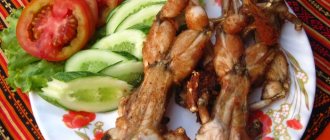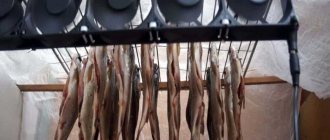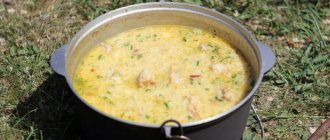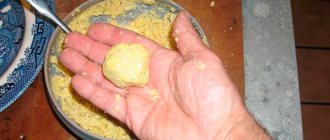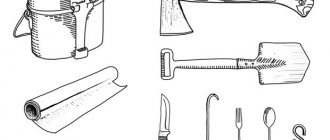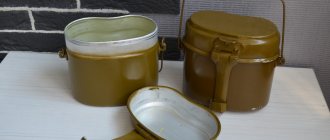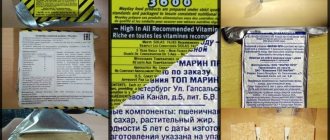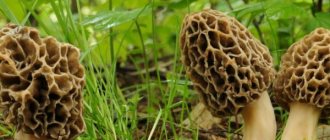Pemmican is a homemade stew. Boiled concentrated meat. Strange, Indian word, interesting and long preparation, but worth it!
Pemmican is a concentrated homemade stew, without water or visible fat - during the cooking process, all the moisture from the meat evaporates and fat takes its place. That is, meat is delicious! And satisfying - fat! And it’s not disgusting - the fat is not visible, even in smoked sausage there are more white specks. Pemmican can be added to soups and porridges instead of stews after cooking. Just stir it.
Why boil pemmican?
Tourists love pemmican (“pemikan”, “pimekan”) for its undoubted advantages:
- 2 times easier
- more calories than stew
- a little cheaper

The calorie content of pemmican for this recipe is approximately 510 kcal/100g, protein 23%, fat 43%
The dish takes a long time to prepare—about 14 hours, including a trip to the market. It is better to do this on a weekend from early morning, because... If you leave it overnight, there is a high risk of drying out the pemmican, then it will harden and will not soak into food - you will have to chew it.
Flaws:
- significant preparation time. Although most of the time consists of waiting, you can do other things.
- There is a considerable chance that pemmekan will not work out (the main reason is stale meat). time and products will be wasted.
- after pimmekan, the pot and plates become quite greasy, which means it’s harder to wash, especially in camping conditions.
What is pemmican?
What is pemmican and how to prepare it? Surely not many people have heard of such a product. Pemmican is a meat sublimate in the Indian style. It was used by the indigenous people of North America during hiking and hunting.
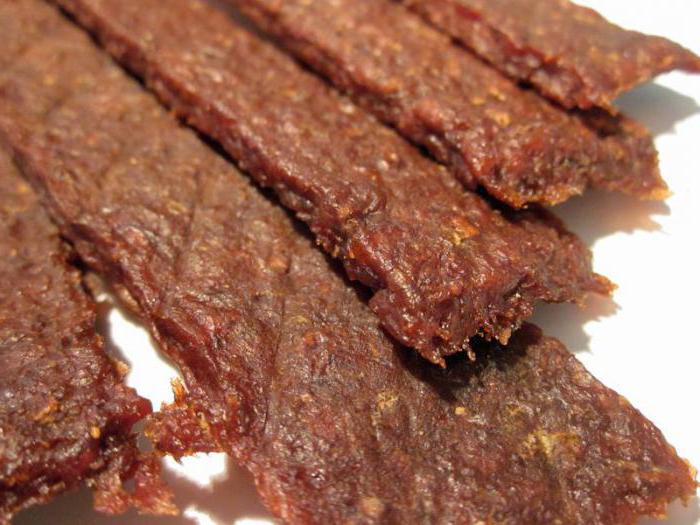
In addition, the product was actively used by polar explorers in the nineteenth and twentieth centuries. Pemmican (sublimate meat) is an easily digestible substance that is incredibly nutritious with very little weight and volume. The product is still used by fishermen, tourists and other people who need to travel serious routes.
You will need
- Thick-walled cast iron duck pot or cauldron. Perhaps several. In the example there are two ducklings.
- Saucepan for melting lard
- Gauze/strainer/colander for filtering lard; a silicone or plastic colander has a high chance of melting, use only a metal one!
- Many plastic kefir/yogurt bottles are also packaged in empty cardboard juice boxes, but we prefer packaging in bottles for 1 meal
- Knives (sharp!) according to the number of participants to make cutting faster
- Cutting boards by number of knives
- Towel or oven mitts
- Kitchen precision scales
- Plate
- The hood is not recirculated, but the exhaust hood emits an unpleasant odor when heated
- Time, helpers. In order to meet the daylight hours, it is ideal to prepare pemmican with at least three people.
- Container - several bottles of drinking yogurt or kefir 430-500g. Better with a reserve. It’s worth saving up containers in advance.
Simple pemmican recipe
It is worth noting that pemmican recipes remain in demand today. Perhaps the product is not used as actively as in the old days, but still it has not been forgotten. Meat sublimate is used by tourists going on difficult and long hikes, as well as rock climbers. In our article we want to give some recipes for making pemmican. Of course, at present, sublimate differs significantly from the Indian version, but the general principles of preparation remain the same.
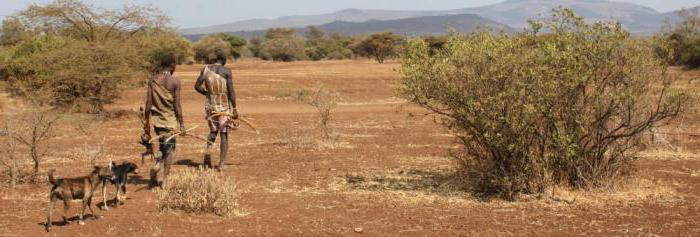
For cooking, you need to take meat and lard in a ratio of 2:1. Cut the lard into very small cubes and heat it in a frying pan. Pour the resulting fat and greaves into a container for further cooking. Crumble small pieces of meat there. Place the pan on the fire and boil the meat for six hours (do not add water). The whole process takes place on the slowest fire. The essence of cooking is that all the liquid is removed from the meat and replaced with fat. The finished sublimate can be heavily salted to ensure that the product does not disappear. Red pepper is also usually added. As you can see, the pemmican recipe is quite simple, but it requires a lot of patience and a lot of time.
Composition
The idea behind pemmican is that it comes from different animals - beef and lard, or vice versa. The fat may not be absorbed into the meat of the same animal.
- Beef tenderloin. in the example 3900 g deveined (20%)
- Pork lard (lard). Interior is better, but regular will do. in the example 1700
- Salt and spices to taste. Cranberries are also optionally added as a natural antioxidant (200g in the example).
In the example, we get 3080 g of the finished product, which is packaged in 11 300 ml yoghurt bottles, which is enough for 7-8 tourists for 11 meals with pemmican.
Next, the cooking process is divided into 4 steps: proportions, lard, meat, connection.
Description of preparation:
Pemmican is a food concentrate made from dried meat and dried berries or dried fruits.
Both American Indians and Siberian hunters took him on a long journey. I think that all nations have their own recipe for preparing such a product. It can be prepared from any meat: pork, beef, game or poultry. Pemmican can be added when preparing soups or porridges, and even if it is not possible to prepare hot food, you can have a snack with pemmican. Purpose: For lunch / For dinner Main ingredient: Poultry / Chicken / Chicken breast Dish: Appetizers
Prepper Menu: Pemmican
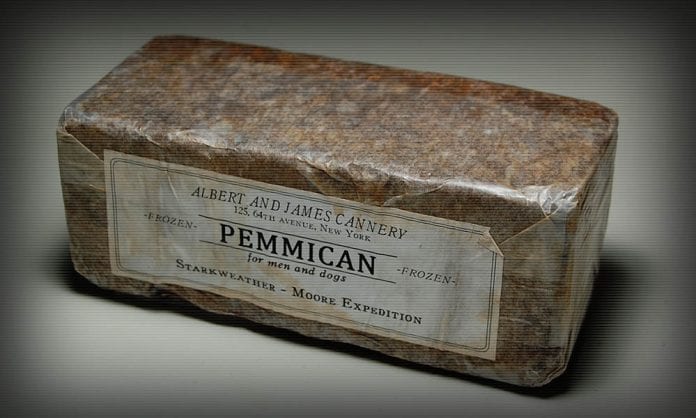
Man is an omnivorous animal. Therefore, meat takes up a very decent share in his diet. No, you can, of course, live on all sorts of falafel, hummus, pea cutlets and soy, but this can only be done in conditions of a stable economy and relatively little physical activity. When it comes, the number of vegans will greatly decrease, if not completely disappear. Because it will be much easier for a person to eat something cheap, widespread and meaty than to show off his taste preferences.
But let's get back to the meat. There are many methods for processing and storing it, for example, the legendary stew. But today we will not talk about them, but about the traditional American Indian method, which results in a product called pemmican .
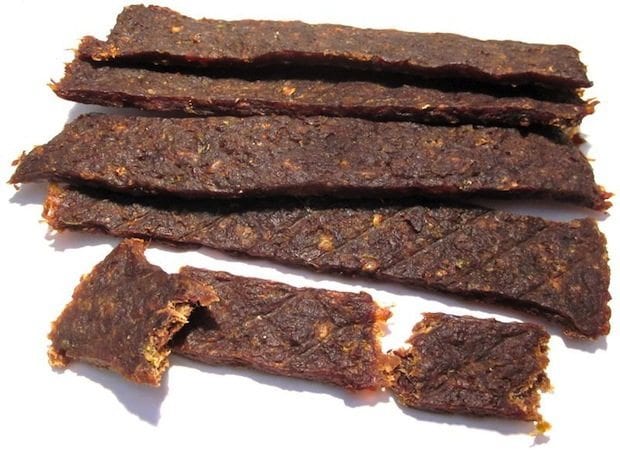
Let's start with terminology. Classic pemmican means a mixture of chopped dried meat, lard, spices and dried fruits. The only way. Not just dried meat, not homemade stew, not baked minced meat with internal fat. All this is the fantasy of modern culinary survivalists “on the topic”. Yes, some of this can really be taken on a hike, but most of it won’t last even a month. But real pemmican can be stored for up to six months.
Actually, it was the long shelf life that caused pemmican to become widespread. The fact is that most of the Indian tribes led a nomadic lifestyle, which means they were directly dependent on hunting and fishing. There is prey - there is dinner. No prey - no dinner. As soon as an opportunity arose, for example, a global hunt for bison during the rut, meat was stored for future use for as long as possible. That is why pemmican can be stored for a long time at above-zero temperatures - well, the Indians did not have portable freezers, so they had to improvise.
Europeans who arrived on the continent very quickly appreciated the beauty of pemmican , so they adopted the recipe and began to actively use it. For example, many northern expeditions stocked up not on corned beef, the taste of which is very specific, but on pemmican , which can be eaten without additional processing. Of course, it does not contain the entire spectrum of vitamins and minerals, but it is much better than nothing.

And all because, in addition to a huge shelf life, pemmican also has an impressive calorie content, light weight and a good, although very peculiar, taste. It is best consumed as an additive to soups and broths, but the mixture can also be simply eaten.
I myself learned about pemmican from the works of Fenimore Cooper, who very accurately conveyed some aspects of the life of the Indians of that time. In his novel “The Last of the Mohicans,” partly based on real events, the red-skinned population actively ate pemmican , although they had it in the form of powder rather than dense briquettes. But these are just cooking features.
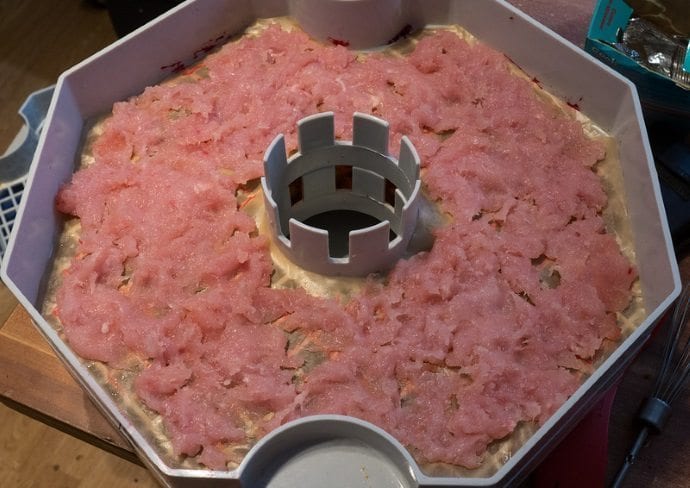
This unique thing is prepared as follows:
- We take meat, preferably beef (distant relatives of bison), remove fat, films and other connective tissue, pass it through a meat grinder or finely chop it with a knife.
- The resulting minced meat is placed on a baking sheet and dried thoroughly (an electric dryer is also suitable).
- Next, grind it in a coffee grinder until smooth. Or we pound it in a mortar, as the Indians actually did.
- We take dried fruits (raisins, dried apricots, anything, and it doesn’t matter that the Indians might not have had it), grind them thoroughly or pass them through a meat grinder.
- We take lard and melt it. Preferably pork. but any other is possible. In the future we will use only the liquid fraction.
- Mix the components in the proportions of 4 parts powder, 2 parts dried fruits and one part fat.
- Stir until smooth, add salt and spices to your heart's content.
- The mixture is laid out on a baking sheet and placed under pressure for several days at a temperature of 60 degrees.
- Cut the resulting substance into portions and pack them in foil.
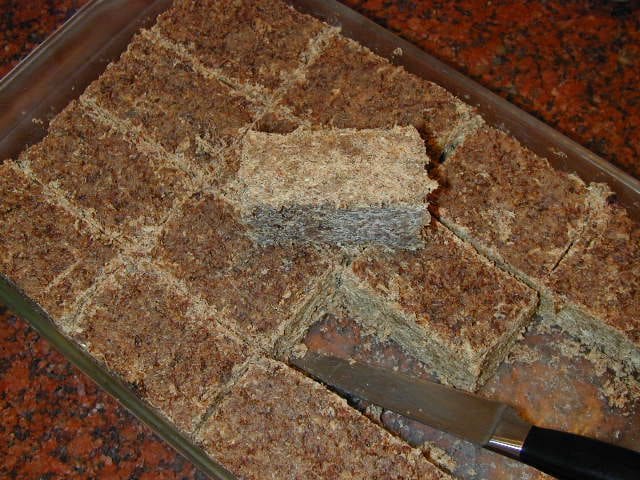
The result is a hard meat concentrate, in which there is practically no water and ordinary fat left. This is why pemmican can be stored at room temperature. And the foil is needed to block the access of moisture. This thing can be chewed on the go, or can be used as “broth cubes”.
The very idea of preserving meat in melted fat is very common among the peoples of the world, so there are other recipes for preparing meat for future use. But we'll talk about them next time.
Recipe based on pork and beef
To prepare pemmican, take fatty pork and beef in a ratio of 1:10. We pass all the meat through a meat grinder, add a little salt and put the mass on a baking sheet. Next, put the meat in the oven. The mixture must be stirred periodically to prevent it from burning. Gradually the meat should dry out, and it should crumble and break easily. When cooking, it is important to understand that the product should not be baked, but rather dried. As a result, we end up with meat that looks like a semi-finished product. Place the finished product in a canvas bag. Meat must be protected from moisture and at the same time it cannot be stored in airtight packaging, since pemmican can acquire an unpleasant odor. Since the product is very hygroscopic, it must be stored in a dry place when camping.
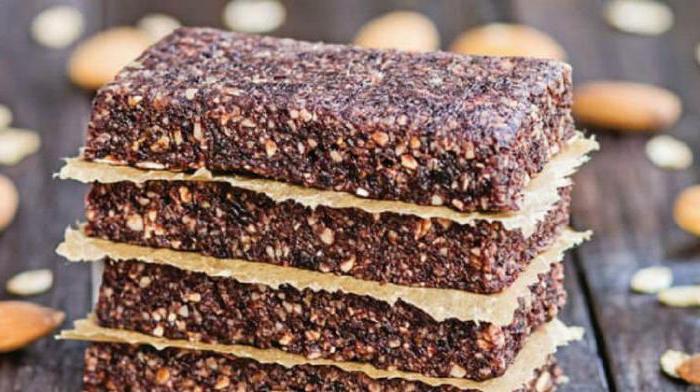
Using the semi-finished product is very simple. A handful is thrown into porridge or soup and boiled with other products. During this cooking process, the meat swells a little, but still remains tough. Nevertheless, it is quite possible to eat it.
In art
| This section may list articles of insignificant or weakly related to the object, its mentions and images in works of culture. Please edit it to show the influence of the subject of the article on significant works of art, based on authoritative sources, avoid listing unimportant facts. |
The use of pemmican is described in detail in the novel The Voyage and Adventures of Captain Hatteras by Jules Verne, as well as in the novel Five Weeks in a Balloon. Pemmican was also mentioned in Galsworthy’s “The Forsyte Saga”:
John saved the juice from the plums, poured it into a medicine bottle and supplied the raft with this rum, as well as pemmican from the accumulated pieces of chicken (he sat on them and then dried them by the fire) and lemon juice for scurvy, made from orange peels and hidden leftover compote.
In a bottle
To prepare pemmican, you need to take lean meat and lard in a 2:1 ratio. For four kilograms of the finished product, you need to prepare six kilograms of veal and three kilograms of lard. As with any other recipe, the lard must be finely chopped and heated in a frying pan. As a result, we will get cracklings and liquid fat. We pour all this into a container and add small pieces of meat. Next, cook the whole mass for at least six hours on the lowest heat without adding water. The mass will gradually acquire amber transparency. The pieces of meat themselves will become more like crackers. The essence of this method is that all moisture must be completely removed from the product, and fat will take its place. Salt and pepper are added as additional ingredients. This allows you to increase the shelf life of pemican. The DIY recipe is quite simple, but takes a lot of time. The finished product must be properly packaged. For packaging we use half liter bottles. We pour the mass into them. The contents of one such container are enough for one meal for ten people. This packaging option is quite convenient. There is no need to divide the product. And hermetically sealed storage is very important for fatty masses.
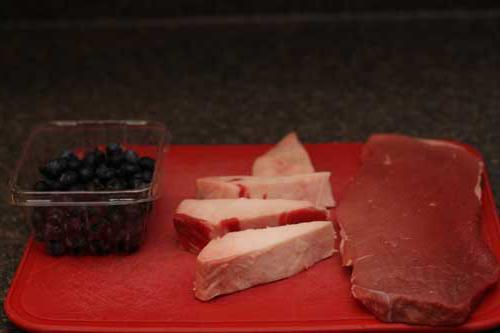
Of course, pouring the mass into bottles is not very easy. For convenience, you should use a funnel. Pieces of meat can be pushed through using a knife. Each container must be filled to the very top. The product is easy to use; you just need to cut the bottle to remove it from the container. If food is being prepared for a smaller group, then 0.3 liter containers can be used.
Classic pemmican
The traditional method is not very different from the option proposed above, if you do not take into account the fact that the Indians used buffalo meat (Figure 2).
How to prepare pemmican according to the classic recipe:
- We take frozen meat, cut it into small pieces and put them in a pan.
- Separately, prepare the rendered fat - pass the lard through a meat grinder and heat it in a frying pan.
- Drain the fatty concentrate through a strainer into a separate container.
- Mix the prepared ingredients, cubes and fat 3:1, respectively.
- Add salt at the rate of two teaspoons per kilogram of cold cuts.
- Pour the mixture with melted fat and evaporate the mixture on the stove for 5-6 hours.
- Cook everything over very low heat, stirring occasionally so that the product does not burn.
Figure 2. Stages of preparing classic freeze-dried meat
As it cooks, the broth will turn from completely cloudy to transparent and dark. At the end of the process, the surface will be covered with foam, 1/4 of the initial mass will remain. Transfer the dish to an airtight container, filling it to the top with fat. This way the sublimate will be suitable for use for a long time.
Pemmican Indians
Of course, the Indian pemmican recipe differed to some extent from modern prototypes. Different peoples had their own options for preparing such a nutritious mixture. However, scientists recognize that Indian pemmican is a balanced product that allowed hunters to receive adequate nutrition on a hike. The sublimate contained not only nutritious bison meat and lard, but also dried fruits, and this reliably protected against scurvy. It is not for nothing that Arctic and Antarctic researchers adopted such a product for travel. It is no secret that many sailors and polar explorers suffered from scurvy during long journeys. The product has deservedly taken a strong position in the nutrition of travelers for some time.

